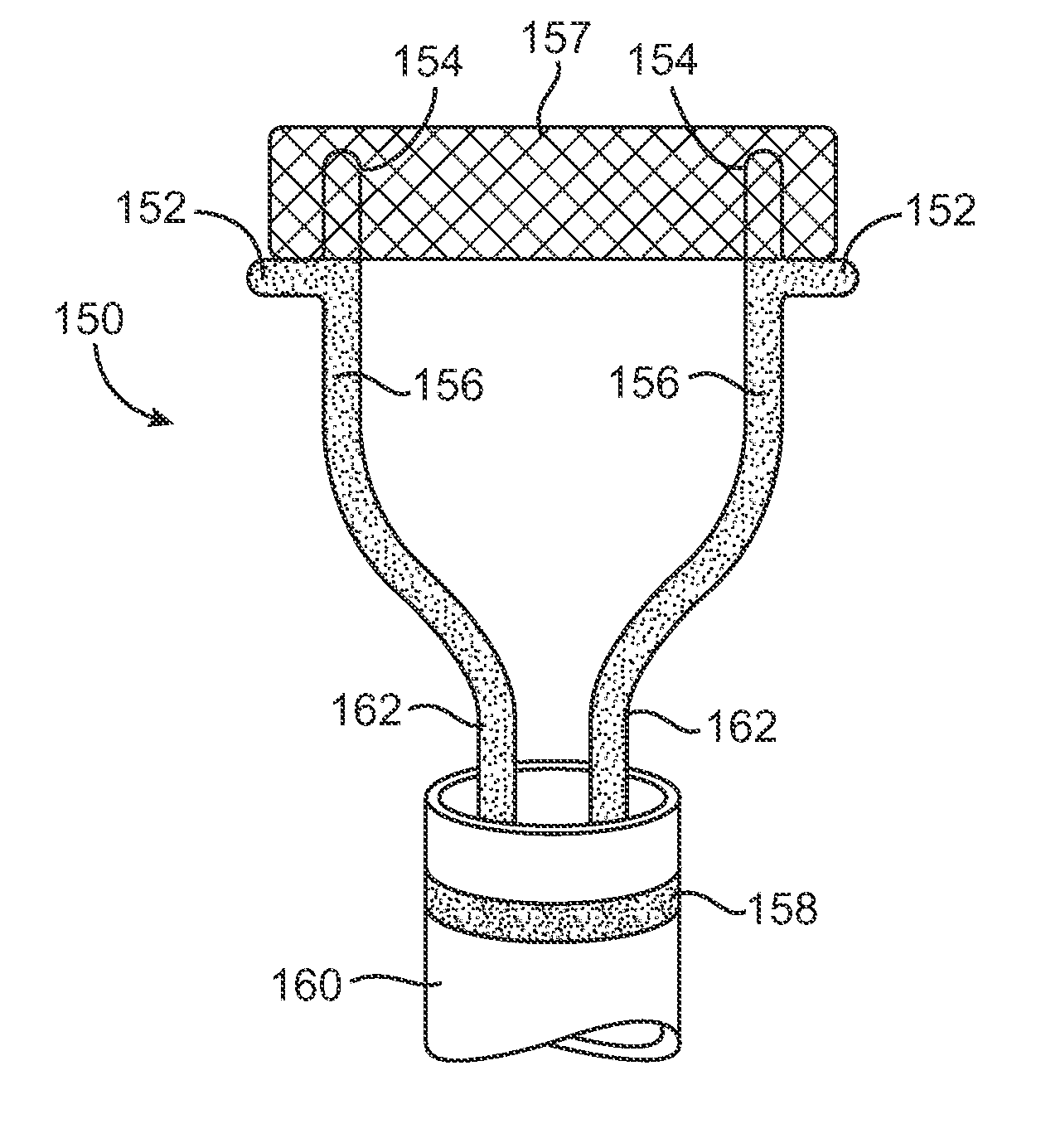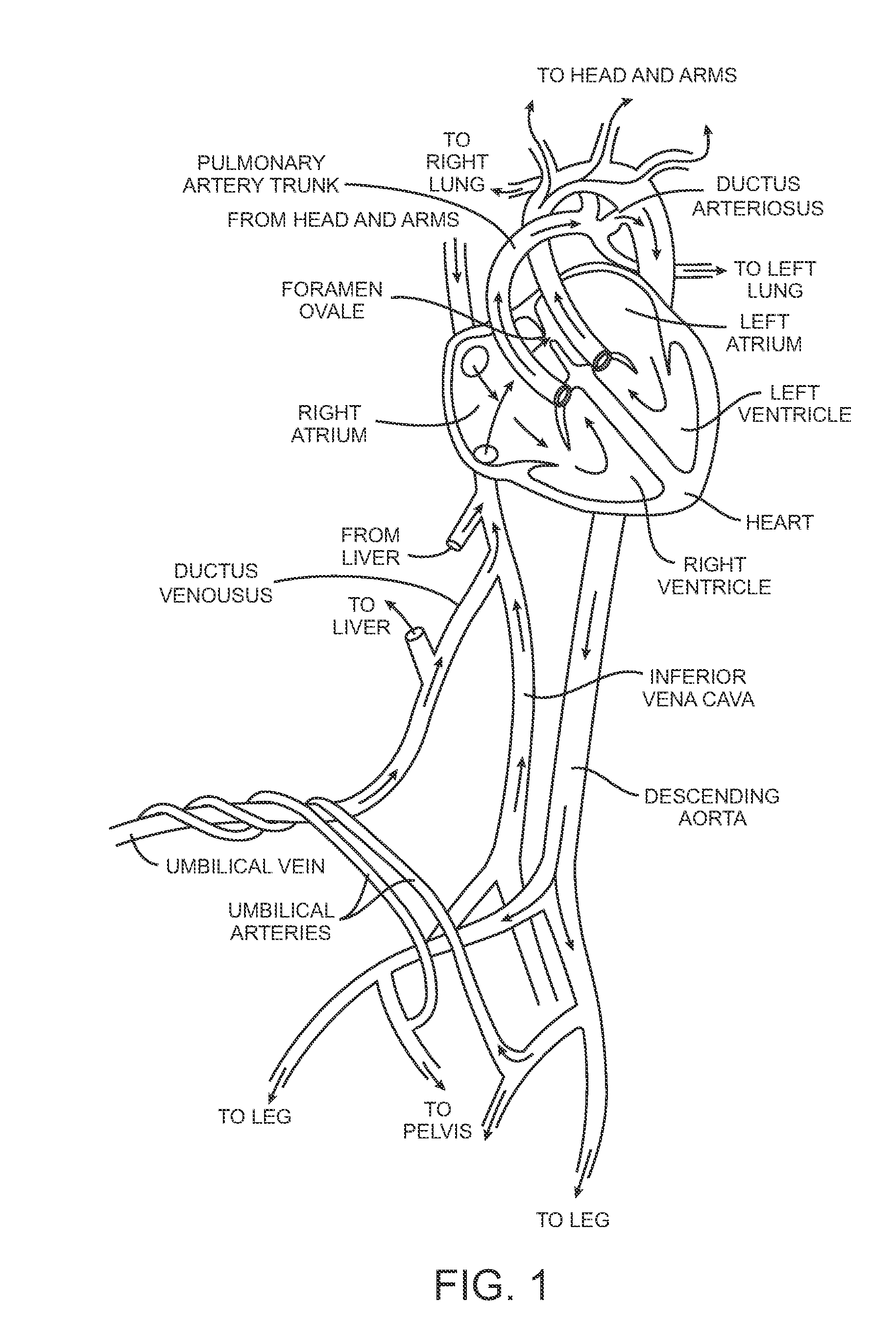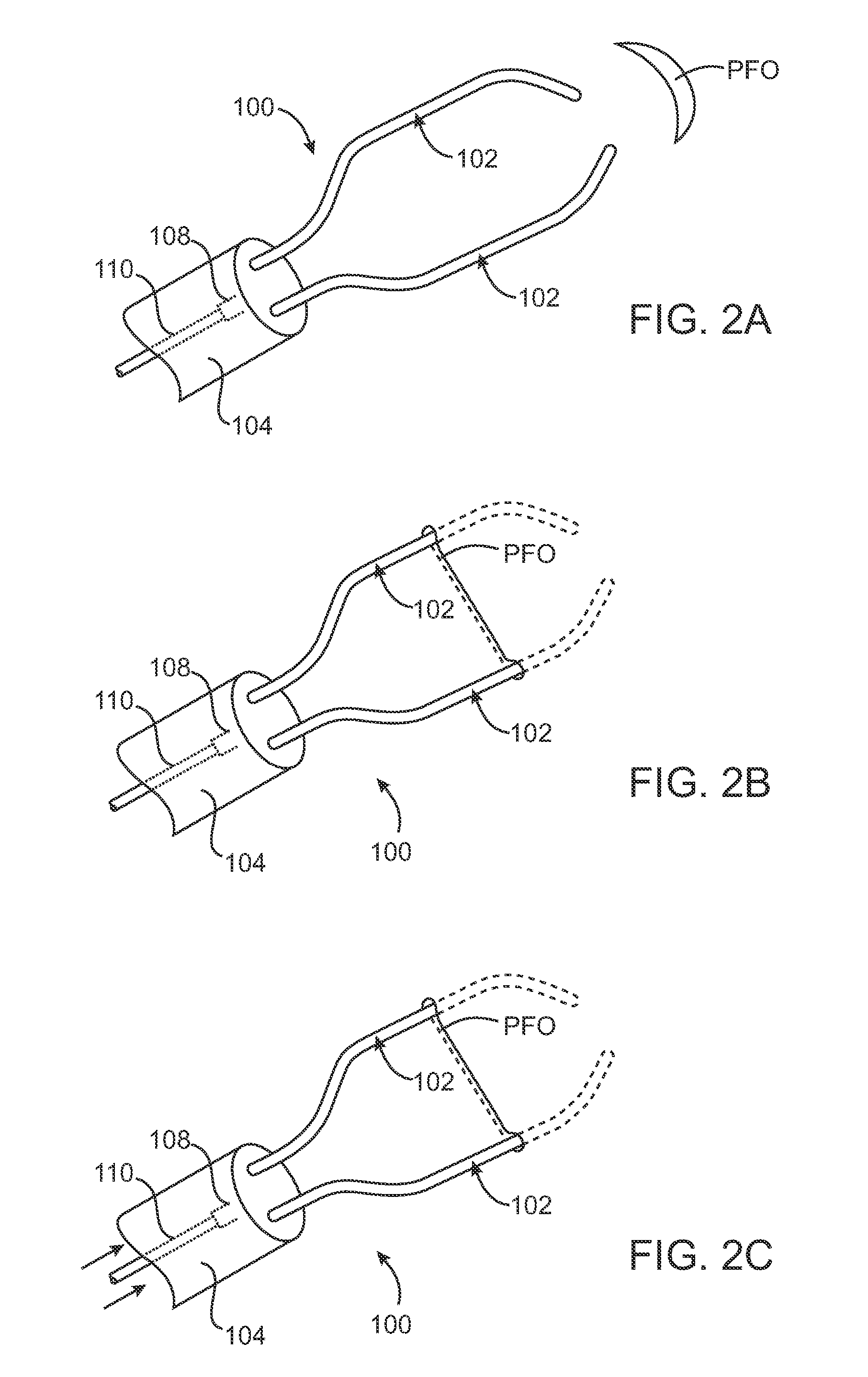Methods and apparatus for closing a layered tissue defect
a tissue defect and layer technology, applied in the field of medical equipment and methods, can solve the problems of high cost and potential side-effects and complications of such a procedure, increased risk of another stroke for patients with cryptogenic stroke, and general pfo interventional therapies being fairly invasive and/or having potential drawbacks. achieve the effect of facilitating the separation of the sock
- Summary
- Abstract
- Description
- Claims
- Application Information
AI Technical Summary
Benefits of technology
Problems solved by technology
Method used
Image
Examples
Embodiment Construction
[0041] Methods and apparatus of the invention generally provide for treating tissue adjacent to a patent foramen ovale (PFO) or within the PFO tunnel to cause closure of the foramen. The methods and devices typically include a catheter which can be advanced through the vasculature of a patient to position the distal end of the catheter between layers of a PFO to provide treatment. Typically, a portion of the surfaces of the layers of the tissue defect are in contact and sometimes the majority of the surfaces of the layers of the PFO defect are in contact. An energy transmission member is disposed at or near the distal end of the catheter and is used to apply energy to the layered tissue defect so as to substantially close the defect. The energy causes bonding to occur between the tissues of the PFO. In some embodiments where an additional implantable closure device is used, the energy also causes bonding between the implantable closure device and the tissues of the PFO, thereby clos...
PUM
 Login to View More
Login to View More Abstract
Description
Claims
Application Information
 Login to View More
Login to View More - R&D
- Intellectual Property
- Life Sciences
- Materials
- Tech Scout
- Unparalleled Data Quality
- Higher Quality Content
- 60% Fewer Hallucinations
Browse by: Latest US Patents, China's latest patents, Technical Efficacy Thesaurus, Application Domain, Technology Topic, Popular Technical Reports.
© 2025 PatSnap. All rights reserved.Legal|Privacy policy|Modern Slavery Act Transparency Statement|Sitemap|About US| Contact US: help@patsnap.com



